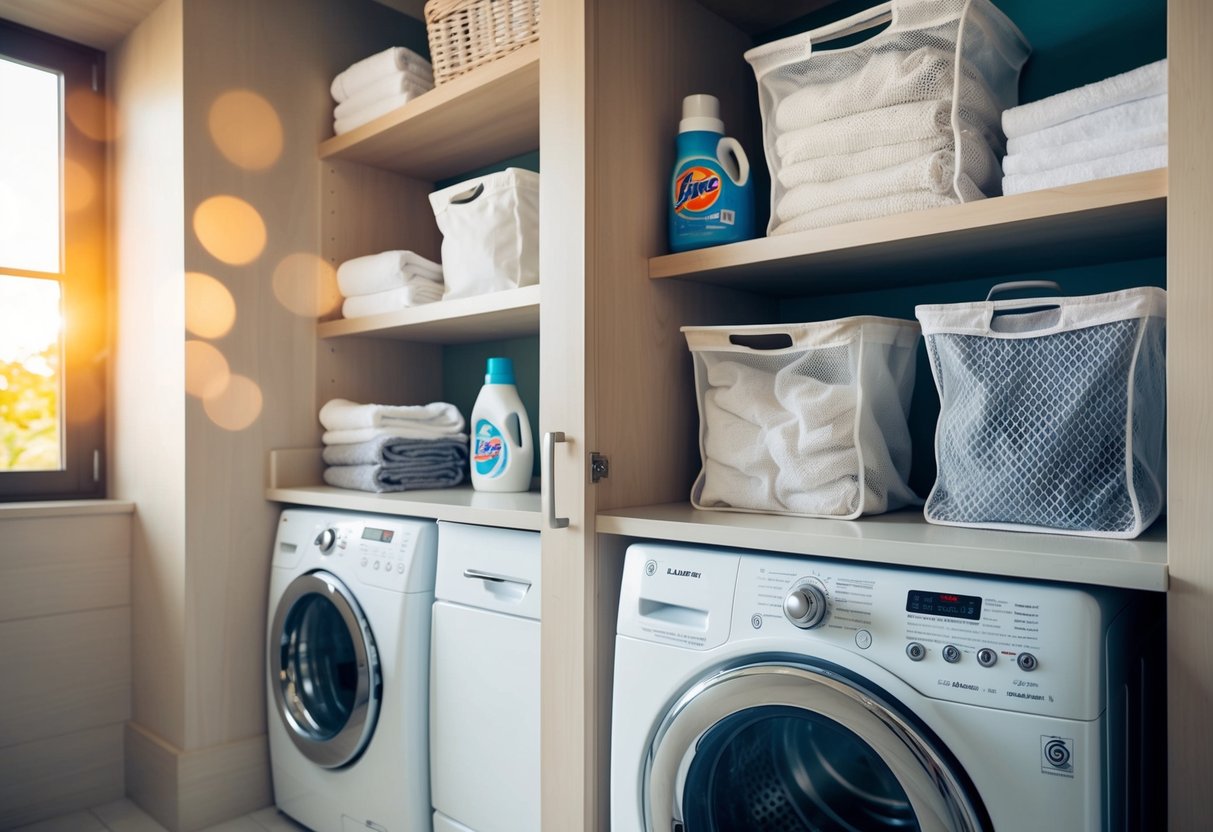
Effective Drying Methods
Enhancing the longevity and performance of activewear involves employing the right drying methods. Prioritizing air-drying over machine drying can significantly reduce wear and maintain fabric integrity.
Benefits of Air-Drying
Air-drying activewear helps preserve the fabric’s elasticity, color, and structure. The gentle nature of air-drying reduces the risk of fabric pilling, which often occurs during machine drying. Furthermore, it prevents exposure to high temperatures that contribute to the breakdown of synthetic fibers.
Another advantage of air-drying is the energy savings it offers. By skipping the use of a dryer, users save on electricity while protecting the high-tech materials in their activewear. The process is simple: laying garments flat or hanging them in a well-ventilated area ensures efficient drying and maintains shape.
Avoiding Machine Drying When Possible
Machine drying can accelerate the deterioration of activewear by subjecting it to intense heat and friction. These factors can weaken synthetic fibers and reduce moisture-wicking capabilities. This is why avoiding the dryer extends the lifespan of the clothing.
Frequent reliance on machine drying also contributes to shrinkage, making garments less comfortable and altering their fit. Over time, heat can cause the material to stretch or lose its original form. To maintain the quality of activewear, opting for alternative methods, like air-drying, is highly advisable whenever circumstances allow.
Maintaining Shape and Elasticity
Activewear often relies on stretchy fabrics to provide comfort and durability during workouts. Proper care is crucial to prevent shrinkage and maintain the elasticity of these garments.
Caring for Stretchy Fabrics
To keep activewear in top shape, gentle washing methods are essential. Use cold water and a mild detergent specifically designed for delicate fabrics. Avoid fabric softeners, which can break down fibers and reduce elasticity. Hand washing is ideal, but if using a washing machine, select a gentle cycle.
Turning garments inside out can help prevent friction and reduce wear during washing. Air drying is recommended, as the heat from dryers can weaken and shrink stretchy materials. Hanging or laying flat to dry also maintains the shape of the fabric without overstretching.
Preventing Shrinkage
Shrinkage can occur when activewear is exposed to high heat. To prevent this, always opt for air drying. If machine drying is unavoidable, choose a low-heat or air-only setting. This helps maintain the garment’s original size and fit.
Proper storage also plays a role in preventing shrinkage. Fold items neatly, ensuring they are stored in a cool, dry place. Avoid hanging stretchy activewear as gravity can stretch and distort them over time. When well-cared for, activewear retains its shape and flexibility, supporting long-term performance.
Special Considerations for Specific Activewear
Different types of activewear require unique care methods to maintain their quality and functionality. This includes understanding how to manage moisture-wicking fabrics and elasticity, ensuring that items like sports bras and running shorts continue to perform as intended.
Care for Sports Bras
Sports bras are essential in providing support during exercise, and maintaining their elasticity is crucial. It is recommended to hand wash sports bras in cold water using mild detergent. Avoid using bleach or fabric softeners, as these can damage the material and break down elasticity.
If machine washing is necessary, place the sports bra in a mesh laundry bag to protect it from snagging. Use a delicate cycle and avoid high heat when drying. Instead, lay the bra flat to dry to prevent stretching the fibers, which helps retain its shape and support.
Washing Tips for Running Shorts
Running shorts are often made of lightweight, breathable materials that wick moisture away from the body. To preserve this feature, wash running shorts in cold water with a gentle detergent. Skip the fabric softener, as it might hinder the moisture-wicking properties.
Turn shorts inside out before washing to protect any prints or reflective elements. Air drying is preferred over machine drying to prevent shrinkage and maintain the integrity of the fabric. For machine drying, use the lowest heat setting possible.
By adjusting washing methods to the specific needs of sports bras and running shorts, one can extend the lifespan and performance of these garments.



